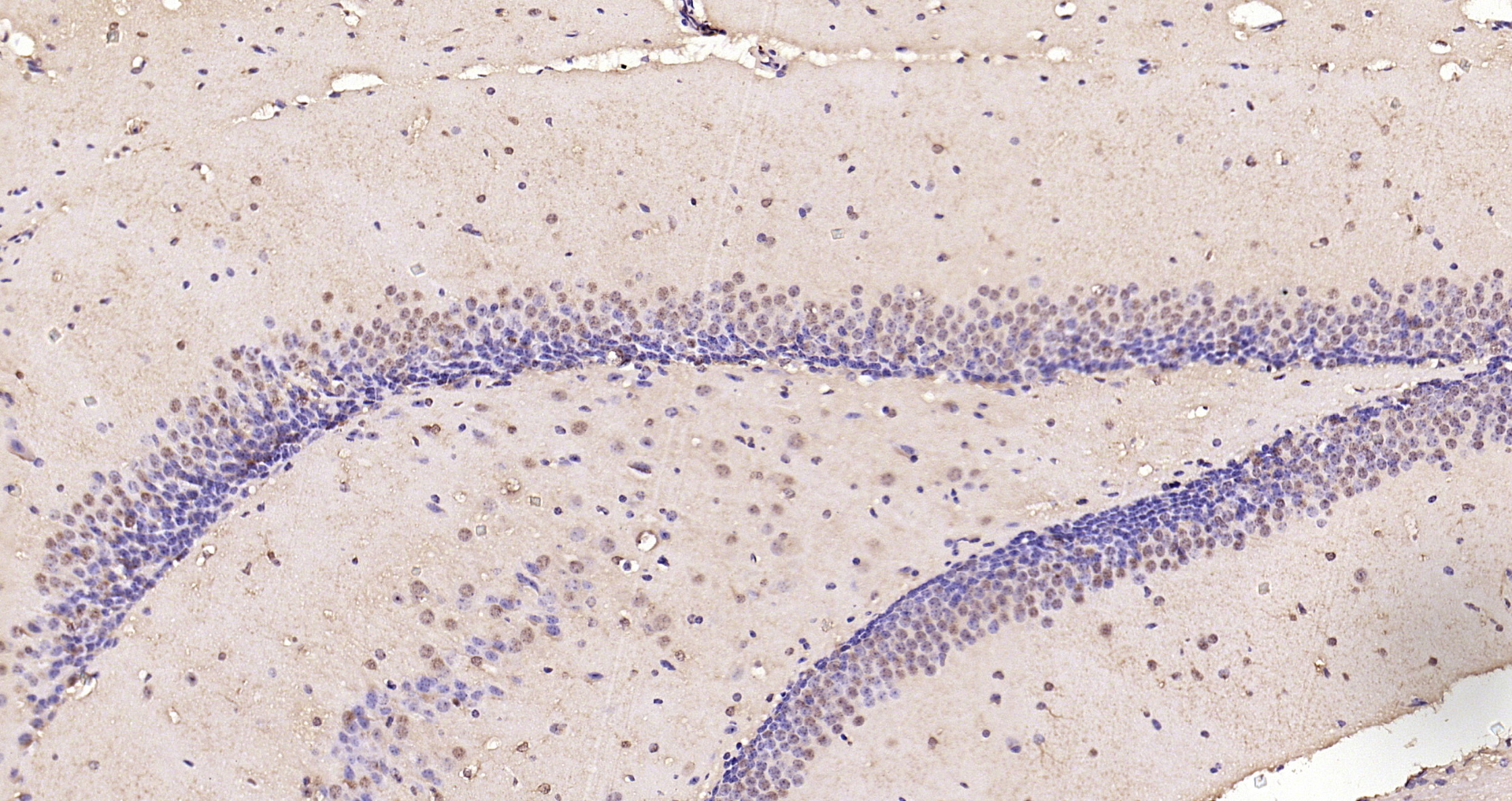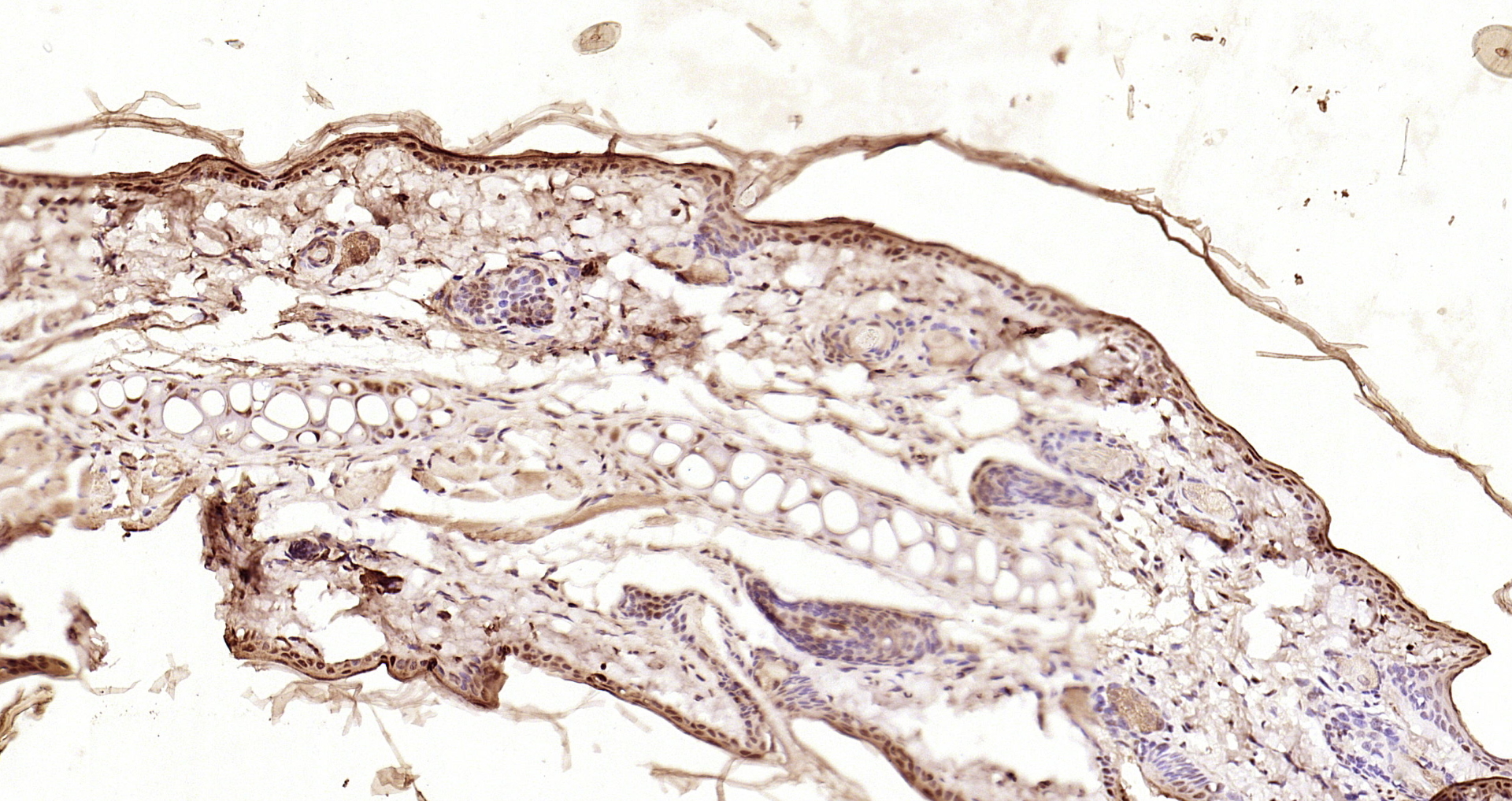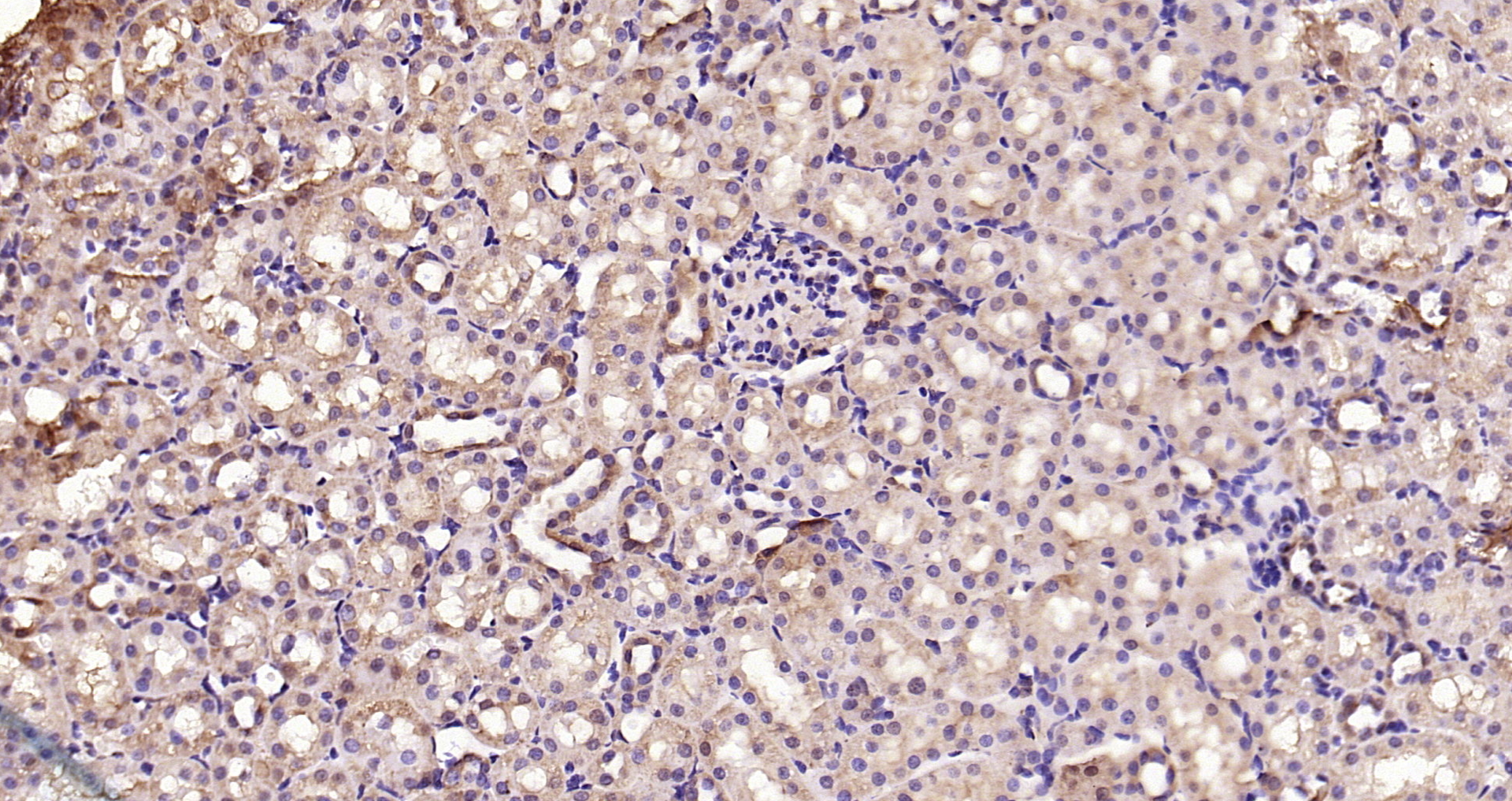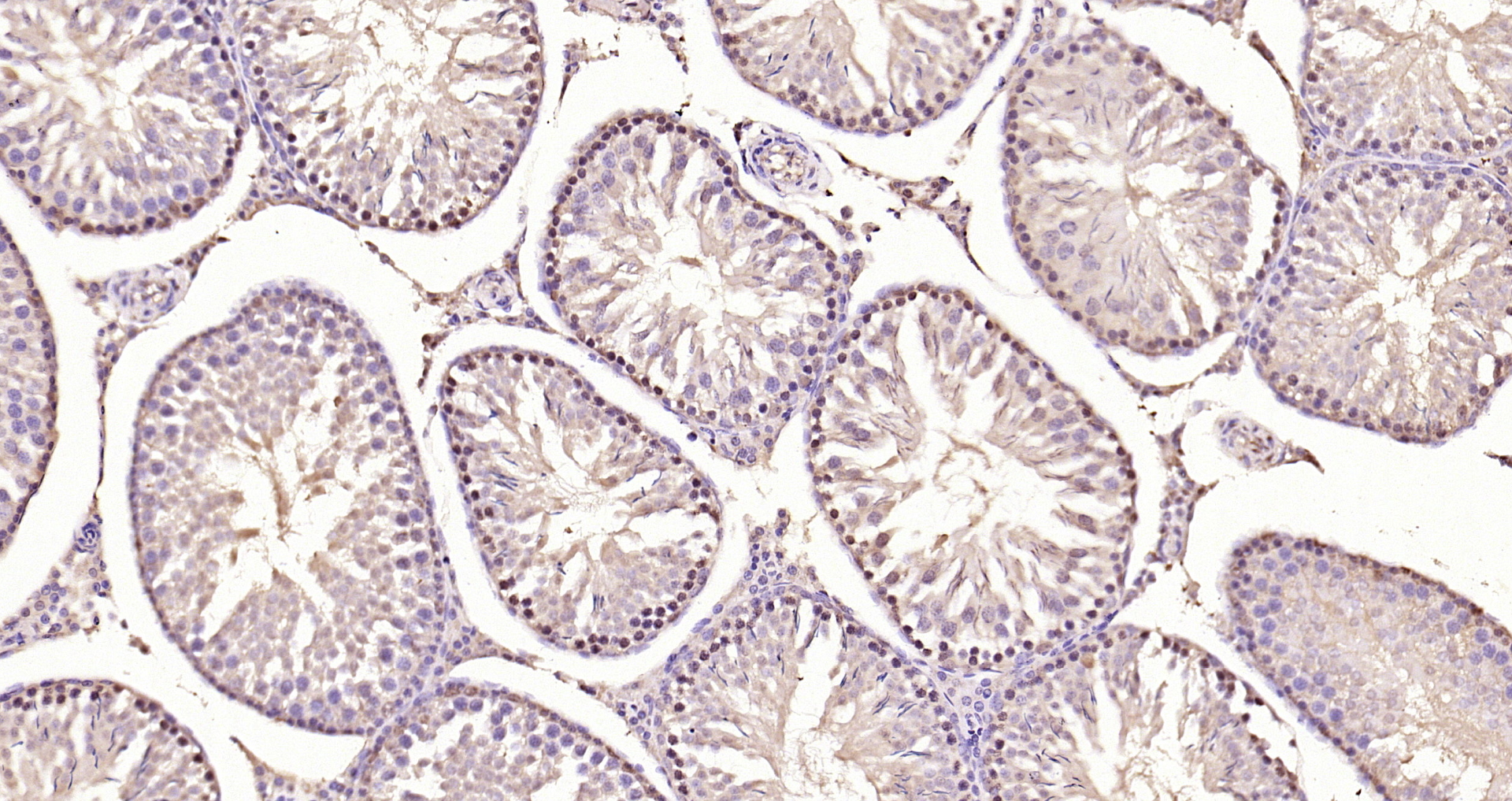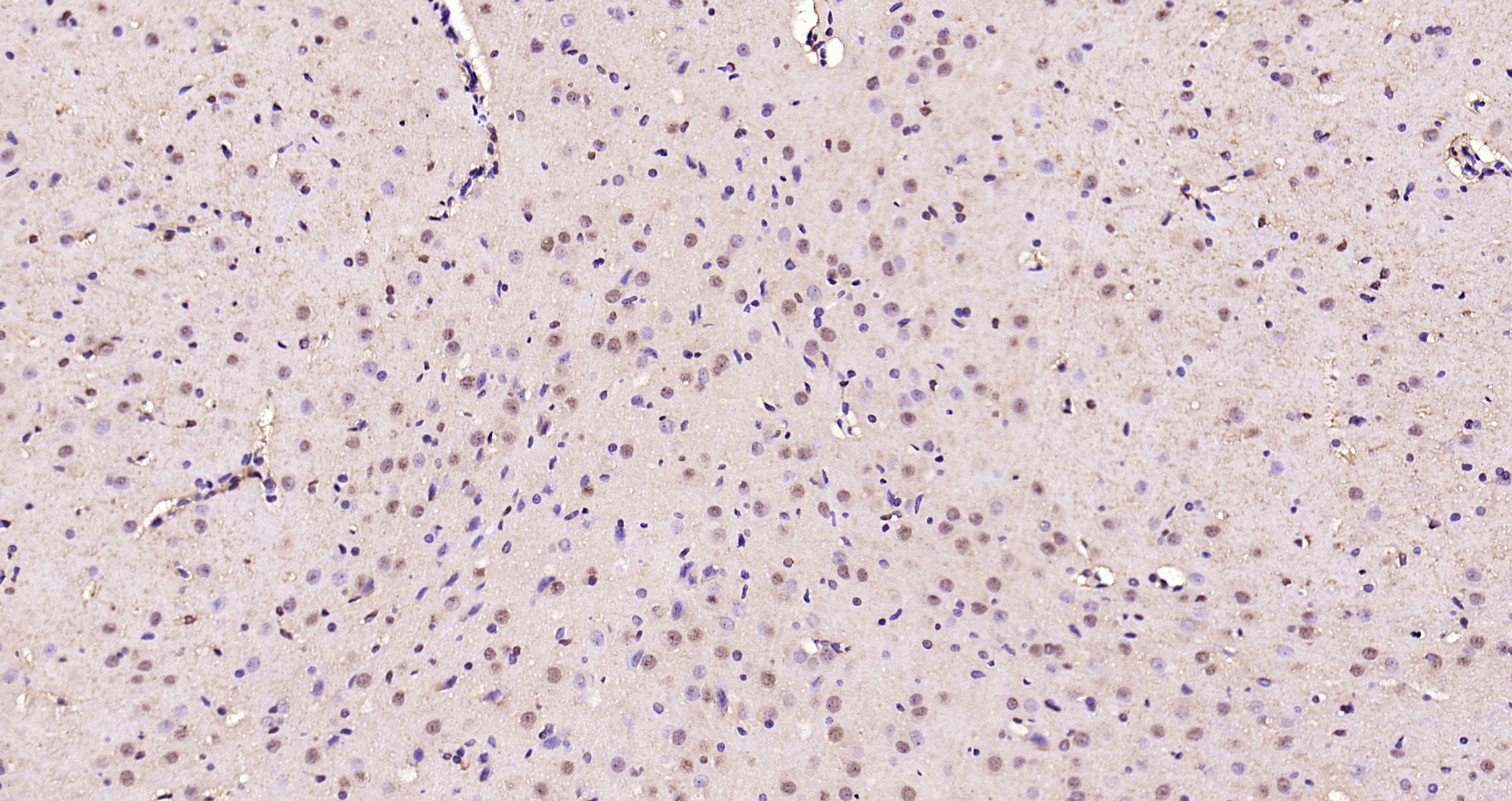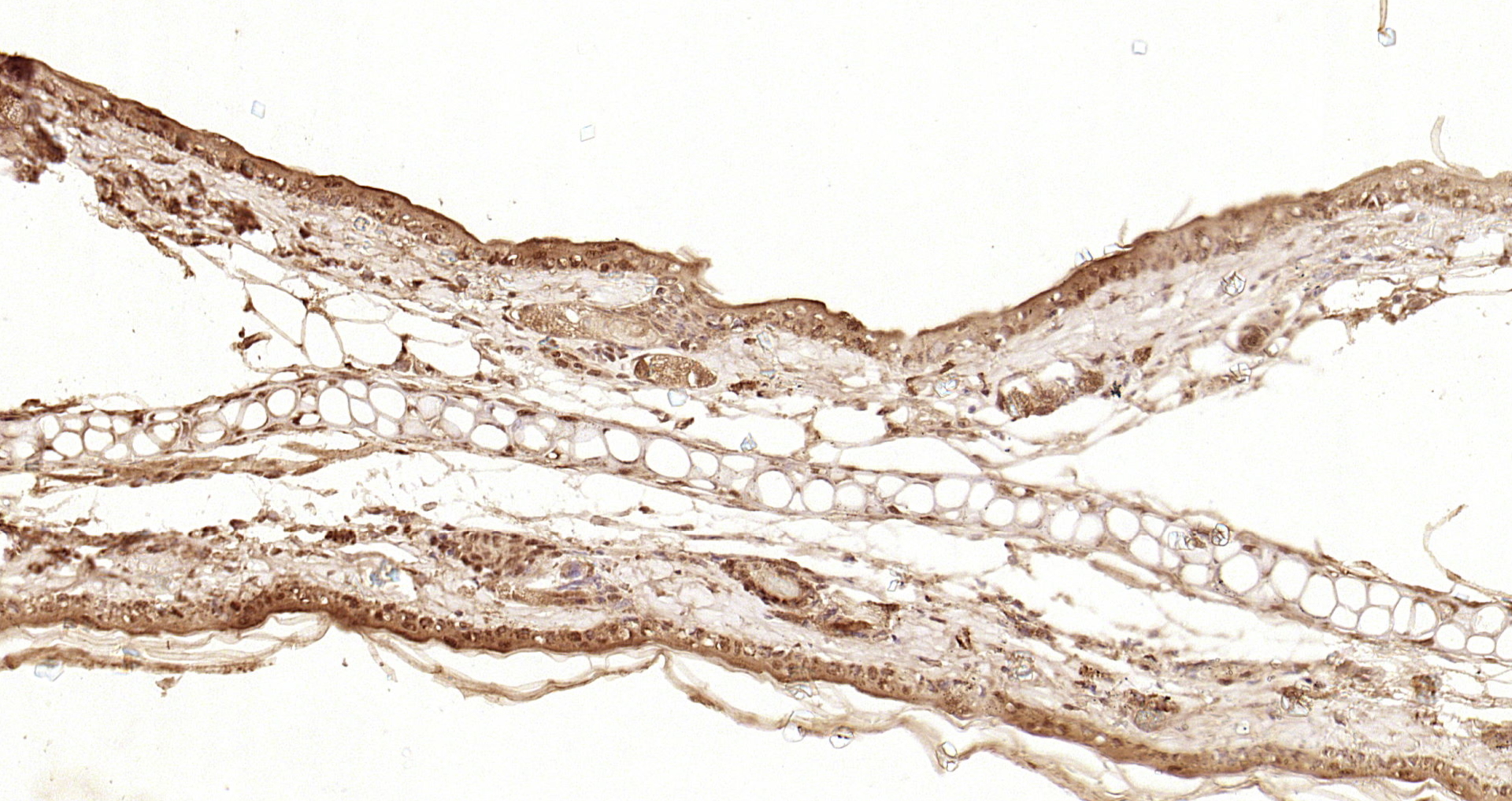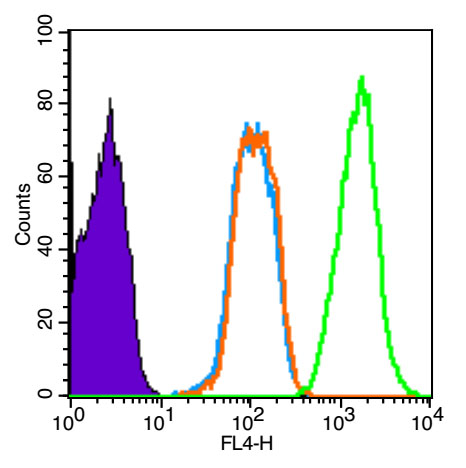
HUVEC cells(black) were fixed with 4% PFA for 10min at room temperature,permeabilized with 90% ice-cold methanol for 20 min at -20℃, and incubated in 5% BSA blocking buffer for 30 min at room temperature. Cells were then stained with Smad3 (Ser423 + Ser425) Polyclonal Antibody(bs-3425R)at 1:50 dilution in blocking buffer and incubated for 30 min at room temperature, washed twice with 2% BSA in PBS, followed by secondary antibody(blue) incubation for 40 min at room temperature. Acquisitions of 20,000 events were performed. Cells stained with primary antibody (green), and isotype control (orange).
Phospho-Smad3 (Ser423 + Ser425) Polyclonal Antibody
BS-3425R
ApplicationsFlow Cytometry, ImmunoFluorescence, Western Blot, ELISA, ImmunoCytoChemistry, ImmunoHistoChemistry, ImmunoHistoChemistry Frozen, ImmunoHistoChemistry Paraffin
Product group Antibodies
ReactivityBovine, Canine, Chicken, Equine, Human, Mouse, Porcine, Rat
TargetSMAD3
Overview
- SupplierBioss
- Product NamePhospho-Smad3 (Ser423 + Ser425) Polyclonal Antibody
- Delivery Days Customer16
- ApplicationsFlow Cytometry, ImmunoFluorescence, Western Blot, ELISA, ImmunoCytoChemistry, ImmunoHistoChemistry, ImmunoHistoChemistry Frozen, ImmunoHistoChemistry Paraffin
- Applications SupplierWB(1:300-5000), ELISA(1:500-1000), FCM(1:20-100), IHC-P(1:200-400), IHC-F(1:100-500), IF(IHC-P)(1:50-200), IF(IHC-F)(1:50-200), IF(ICC)(1:50-200)
- CertificationResearch Use Only
- ClonalityPolyclonal
- Concentration1 ug/ul
- ConjugateUnconjugated
- Gene ID4088
- Target nameSMAD3
- Target descriptionSMAD family member 3
- Target synonymsHSPC193, HsT17436, JV15-2, LDS1C, LDS3, MADH3, hMAD-3, hSMAD3, mad3, mothers against decapentaplegic homolog 3, MAD homolog 3, MAD, mothers against decapentaplegic homolog 3, SMA- and MAD-related protein 3, SMAD, mothers against DPP homolog 3, mad homolog JV15-2, mad protein homolog, mothers against DPP homolog 3
- HostRabbit
- IsotypeIgG
- Protein IDP84022
- Protein NameMothers against decapentaplegic homolog 3
- ReactivityBovine, Canine, Chicken, Equine, Human, Mouse, Porcine, Rat
- Storage Instruction-20°C
- UNSPSC12352203
References
- Guo LP, Chen LM, Chen F, et al. Smad signaling coincides with epithelial-mesenchymal transition in a rat model of intrauterine adhesion. Am J Transl Res. 2019,11(8):4726-4737.Read this paper
- Wang JQ, Dong Y, Li SJ, et al. Knockdown of microRNA-17-5p Enhances the Neuroprotective Effect of Act A/Smads Signal Loop After Ischemic Injury. Neurochem Res. 2019,44(8):1807-1817. doi: 10.1007/s11064-019-02815-3Read this paper
- Zhang W, Du Y, Zou Y, et al. Smad Anchor for Receptor Activation and Phospho-Smad3 Were Upregulated in Patients with Temporal Lobe Epilepsy. J Mol Neurosci. 2019,68(1):91-98. doi: 10.1007/s12031-019-01285-0Read this paper
- Zhang WF, Yang Y, Li X, et al. Angelica polysaccharides inhibit the growth and promote the apoptosis of U251 glioma cells in vitro and in vivo. Phytomedicine. 2017,33:21-27. doi: 10.1016/j.phymed.2017.06.007Read this paper
- Shang P, Liu T, Liu W, et al. Telmisartan improves vascular remodeling through ameliorating prooxidant and profibrotic mechanisms in hypertension via the involvement of transforming growth factor-β1. Mol Med Rep. 2017,16(4):4537-4544. doi: 10.3892/mmr.2017.7177Read this paper
- Bai L, Chu G, Wang W, et al. BAMBI promotes porcine granulosa cell steroidogenesis involving TGF-β signaling. Theriogenology. 2017,100:24-31. doi: 10.1016/j.theriogenology.2017.05.022Read this paper
- Shang P, Liu W, Liu T, et al. Acetyl-11-Keto-β-Boswellic Acid Attenuates Prooxidant and Profibrotic Mechanisms Involving Transforming Growth Factor-β1, and Improves Vascular Remodeling in Spontaneously Hypertensive Rats. Sci Rep. 2016,6:39809. doi: 10.1038/srep39809Read this paper
- Hu N, Duan J, Li H, et al. Hydroxysafflor Yellow A Ameliorates Renal Fibrosis by Suppressing TGF-β1-Induced Epithelial-to-Mesenchymal Transition. PLoS One. 2016,11(4):e0153409. doi: 10.1371/journal.pone.0153409Read this paper
- Tang H, Gao L, Mao J, et al. Salidroside protects against bleomycin-induced pulmonary fibrosis: activation of Nrf2-antioxidant signaling, and inhibition of NF-κB and TGF-β1/Smad-2/-3 pathways. Cell Stress Chaperones. 2016,21(2):239-49. doi: 10.1007/s12192-015-0654-4Read this paper
- Ghiabi P, Jiang J, Pasquier J, et al. Breast cancer cells promote a notch-dependent mesenchymal phenotype in endothelial cells participating to a pro-tumoral niche. J Transl Med. 2015,13:27. doi: 10.1186/s12967-015-0386-3Read this paper

